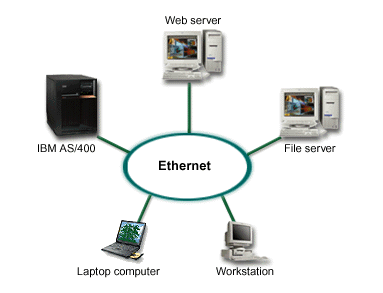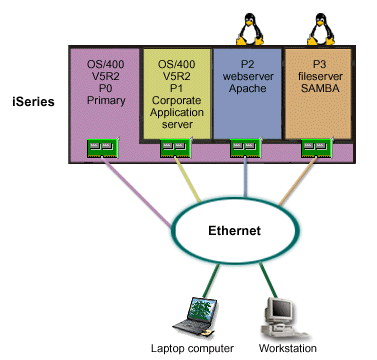This scenario demonstrates how you can use the reliability of the iSeries™ to run Linux® application.
Situation

You are the system administrator of a company with three servers boxes. Each server performs unique tasks for your business. These servers are as follows:
- The IBM® system runs the ordering system which is the core business application.
- The UNIX® web server is your corporate intranet web server.
- The Microsoft® based file server is used for sharing and backing up files.
These servers provide services to computers on your company's network. Your company wants to consolidate aging equipment to streamline the company's information technology (IT) operations and to improve server availability. The company also wants to increase application flexibility using an open-source operating system. What should you do?
Solution
The following image shows the consolidated iSeries server running logical and guest partitions.

After researching and planning your partitioned environment, you created four partitions on your new server using iSeries Navigator. You allocated the minimum amount of hardware resources to your primary partition. All of the information on your older AS/400® was migrated to partition P1 running OS/400® V5R2. This release provides the flexibility of dynamically moving logical partition resources among partitions without a system restart. You installed the Linux operating system on partition P2 and P3. Partition P2 runs Apache and is your HTTP server. You installed the Samba software to partition P3. This partition provides file and print services to Server Message Block (SMB) clients.
All of the partitions own directly attached LAN adapters. Each of these LAN adapters are connected to the corporate network. Your employees are still able to access data from each of these partitions using either their laptop computers or workstation.
Now that you have your new configuration, you are still concerned about protecting the corporate network. You believe that your current firewall solution is inadequate and you want a more customized firewall application.